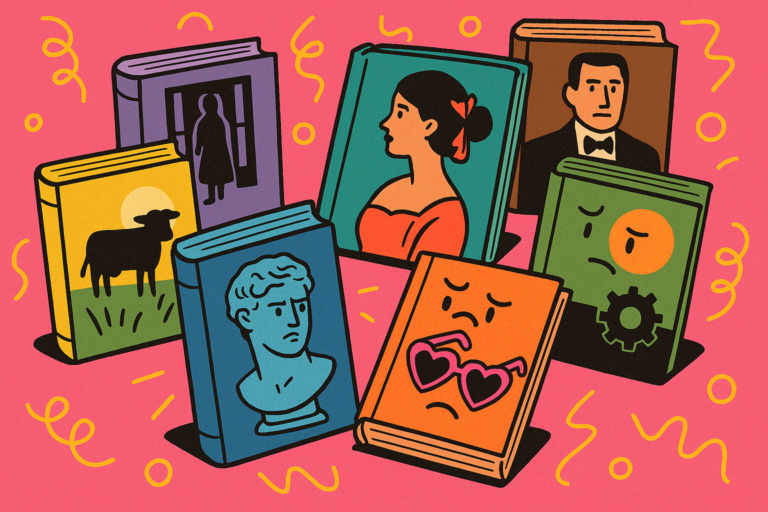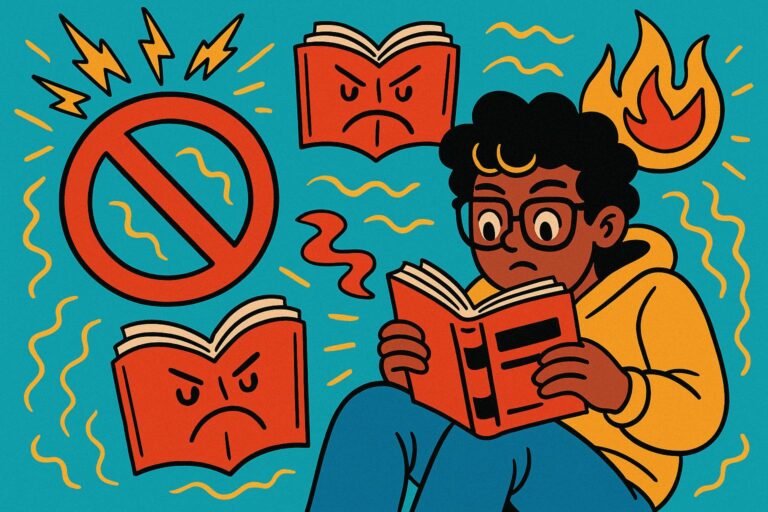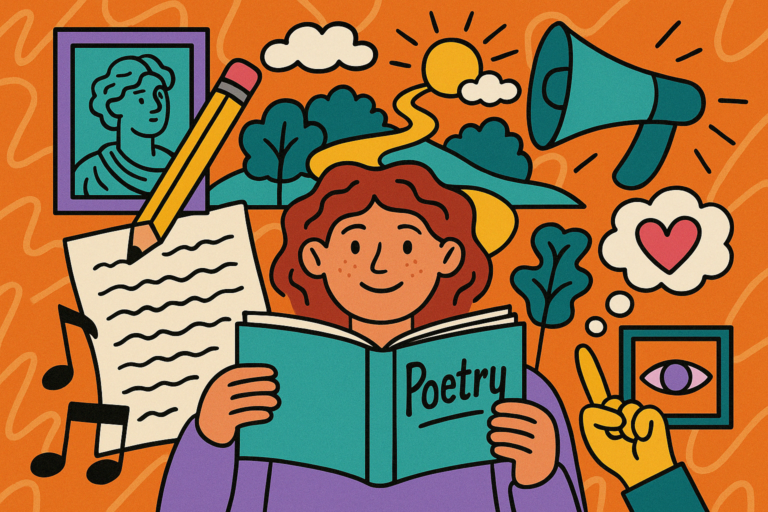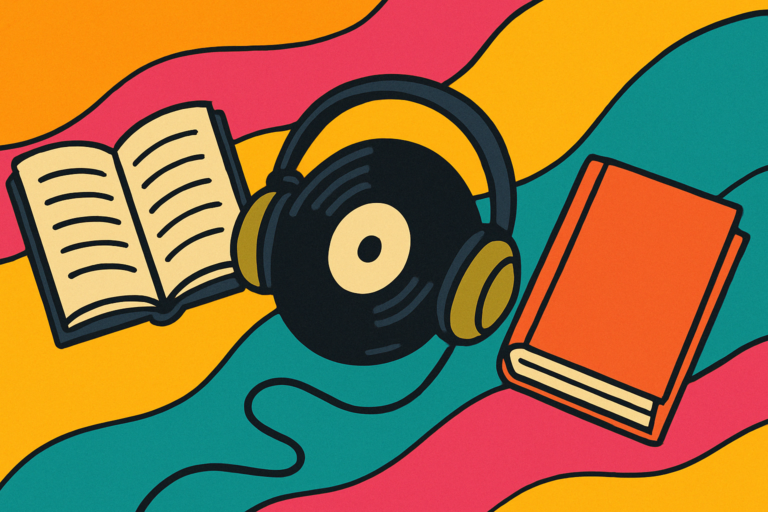The Comeback of Oral Storytelling in the Digital Age Via Audiobooks
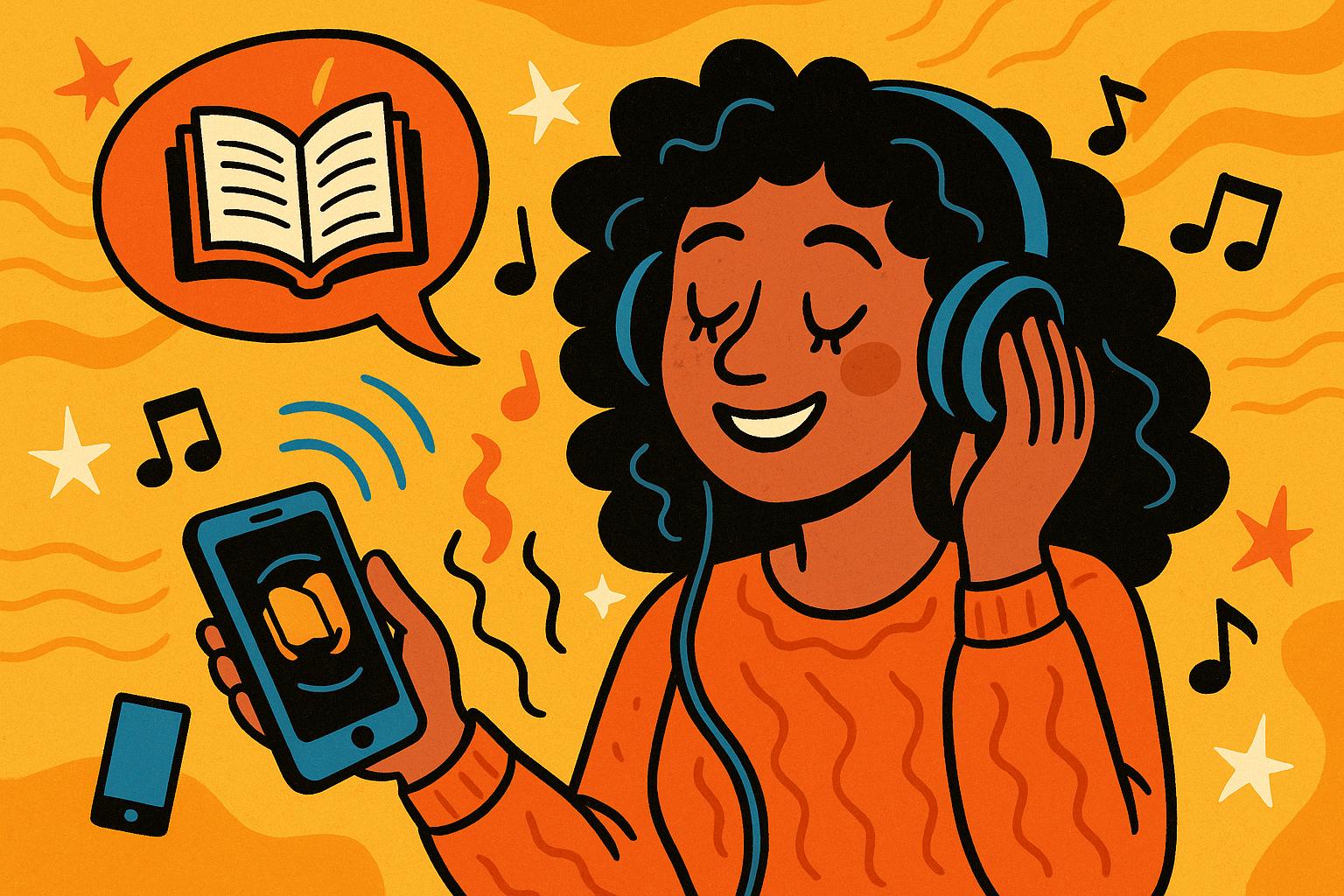
Let me paint a quick picture: centuries ago, people gathered around fires to pass down stories by word of mouth. It was intimate, communal, and human.
Then came writing, printing presses, movies, and endless streams of content. For a while, it felt like oral storytelling had taken a backseat.
But now?
We’re right in the middle of a quiet, powerful comeback—and audiobooks are leading it.
What fascinates me most is that this resurgence isn’t a throwback. It’s not nostalgia.
It’s a reinvention—a new form of oral narrative that’s been shaped by digital tech, new listening habits, and the creative experimentation of producers and narrators.
As someone who’s spent way too many hours deep-diving into this space, I can confidently say: audiobooks aren’t just booming—they’re reshaping how we engage with stories.
And if you’re in publishing, education, media, or audio production, that shift is something worth paying attention to.
The Digital Infrastructure Powering the Revival
So how did we get here?
I mean, audiobooks have technically been around since the 1930s. But let’s be honest—those clunky cassette tapes and CDs were never going to create a cultural movement. What’s changed now is the digital infrastructure. The technology finally caught up to the idea, and suddenly, listening to a book became easier than reading one.
Let’s start with the obvious: mobile tech. The real turning point, from everything I’ve read and tracked, was the rise of smartphones paired with affordable wireless headphones. Suddenly, we had the ability to listen to long-form content anywhere—on the train, while cleaning, walking the dog, or even falling asleep. The physical and mental friction of sitting down to read was replaced with a tap-and-go model.
But hardware is just part of it.
Platform ecosystems like Audible, Spotify, and Libro.fm have become powerful distribution machines. Audible, for example, didn’t just provide access to books—they created an entire experience.
Their app is intuitive, cloud-based, and optimized for binge-listening. And it’s not just the tech. Their investment in exclusive content, celebrity narrators, and high-production-value originals has made audiobooks feel, dare I say, cinematic.
Here’s where it gets even more interesting: AI and synthetic voice tech. I know this might be controversial in some circles, but we have to talk about it.
Platforms like Google Play Books and Apple Books have started using synthetic narrators for certain titles—especially those in niche or academic categories where a human narrator might not be financially viable.
While the emotional depth isn’t quite there yet, the clarity and pacing are shockingly good. This opens up accessibility to long-tail content that otherwise wouldn’t make the jump to audio.
That said, human narration is still the gold standard. And the infrastructure supports that, too. I’ve spoken to indie authors who use platforms like Findaway Voices or Voices.com to produce and distribute their own audiobooks without going through traditional gatekeepers.
We’re seeing a kind of “creator economy” moment in audio—where self-published authors, small presses, and even podcast storytellers can enter the audiobook space without huge budgets or insider connections.
Then there’s data and personalization. Audible and Spotify are increasingly leaning on behavioral data to recommend content based on past listens, mood tags, or even time of day.
That’s huge. It’s no longer just about “What do I want to read?” but “What do I want to feel while listening?” And this mood-based content discovery has led to new listening habits—people using audiobooks the way they use music or podcasts: for atmosphere, motivation, or comfort.
To sum it up: the revival of oral storytelling didn’t happen because we missed it—it happened because the digital world finally made it irresistible. The tech isn’t just a delivery system; it’s reshaping the very nature of how we think about narrative, attention, and emotional connection.
Audiobooks are no longer just “books read out loud.” They’re something else entirely—a form that’s native to the digital age, not borrowed from print.
Audiobooks as Contemporary Oral Literature
Let’s get into the heart of it: audiobooks are more than just another format—they’re becoming a distinct form of literature, shaped by the dynamics of voice, sound, and performance. What’s happening right now feels like a new kind of oral storytelling, and I’d argue it deserves to be treated as its own medium—not just a sidekick to print.
Here’s a breakdown of five major trends I see redefining how we experience narrative through audiobooks:
1. Narrative as Performance
One of the biggest shifts is that narrators are no longer invisible. They’re not just there to read the text—they’re interpreting it, giving it rhythm, personality, and emotion. And when it’s done right, the narrator becomes a co-author in the experience.
Take Bahni Turpin, for instance. Her performance of The Hate U Give is often cited as one of the most emotionally impactful audiobook narrations of the last decade. She switches seamlessly between tones and characters, injecting urgency, humor, and raw emotion. Her voice doesn’t just tell the story—it embodies it.
This isn’t just about acting skill—it’s about vocal storytelling as an art form. In a way, it brings us full circle to the griots, bards, and storytellers of old. We’re seeing the emergence of a kind of literary vocal craft that exists only in this space. Some narrators even have loyal fanbases that follow them, regardless of the author or genre. That’s wild.
2. The Author-Narrated Trend
This is one I personally find really compelling. More and more, authors are stepping up to narrate their own work—and it’s creating a totally different kind of connection.
Think about Michelle Obama narrating Becoming or David Sedaris reading Me Talk Pretty One Day. You’re not just hearing a story—you’re being spoken to by the person who lived it. There’s a kind of intimacy there that you just can’t replicate with a written page.
Now, not every author is a natural performer (and some really shouldn’t be in the booth), but when it works, it adds authenticity. Especially in memoir, poetry, or personal essays, the author’s voice becomes part of the story’s emotional architecture.
And in a digital culture that increasingly craves “authentic” connection, this trend is only going to keep growing.
3. Genre Evolution Through Voice
Audiobooks are actively transforming certain genres—and some were practically made for this format.
- Memoir is probably the most obvious. Hearing someone recount their life in their own voice feels more like a conversation than a text. It’s raw, unfiltered, and powerful.
- Self-help and personal development also shine in audio. The format turns motivational writing into something more like a personal coaching session—especially when the tone is warm, conversational, and direct.
- Even literary fiction benefits. A beautifully narrated novel can help untangle complex prose, highlight emotional undertones, and maintain a listener’s attention across long, immersive storytelling arcs.
In fact, I’d argue that audiobooks are helping to expand the audience for certain genres. For example, readers who find literary fiction dense or intimidating in print may find it more approachable and emotionally resonant in audio form.
4. Multicast and Sound Design
We’re not in Kansas anymore. Some of today’s audiobooks sound more like movies than books. And I mean that in the best way.
Multicast productions—where different voice actors portray different characters—have become increasingly common, especially in genres like sci-fi, fantasy, and thriller. Add in immersive sound design, ambient music, or environmental effects, and you’ve got something that straddles the line between audiobook and audio drama.
Take George Saunders’ Lincoln in the Bardo, for example. It features 166 different voices, including Nick Offerman, David Sedaris, and Susan Sarandon. It’s weird, haunting, and deeply theatrical. Or check out Neil Gaiman’s The Sandman adaptation on Audible—sound-rich, dramatically paced, and way closer to cinema than literature.
It’s a sign of how fluid the boundaries are becoming. We’re entering a space where audiobooks, podcasts, and audio fiction are blending into new narrative forms.
5. Globalization of Voice
This might be the most exciting trend of all: the explosion of diverse voices in the audiobook world.
Historically, the industry has skewed pretty hard toward white, Western, English-speaking narrators. But that’s changing. Fast.
We’re seeing more audiobooks produced in multiple languages. More narrators with regional accents, bilingual skills, or cross-cultural identities. And more stories that reflect the lived experiences of communities that weren’t always represented in mainstream publishing.
In India, for example, platforms like Storytel are thriving with regional language content. In Latin America, there’s a push toward indigenous-language storytelling in digital audio. And in the U.S., we’re finally hearing narrators with Black, Latinx, Asian, and Native American backgrounds bring authenticity to characters and cultural references that used to be flattened out in production.
This globalization of voice isn’t just about representation—it’s about preserving and evolving oral traditions within the digital space. And it’s setting the stage for a truly global narrative culture.
Implications for Literacy and Publishing
Alright, let’s zoom out a bit.
All this innovation in audiobook storytelling isn’t just about format or entertainment—it’s shaking up some really big ideas about literacy, publishing, and even cultural memory.
Listening as Literacy
Here’s something I wish more people would say out loud: listening is reading. Full stop.
I know, the debate over whether audiobooks “count” as reading still floats around. But cognitive science has our backs here—studies show that when we listen to a well-narrated book, the brain processes language comprehension in very similar ways to reading visually. The differences lie mostly in decoding and pacing, not in understanding.
And for a growing number of people, especially those with dyslexia, ADHD, or vision impairments, audiobooks offer a path to deep, focused literary engagement that traditional print might block.
There’s also an emerging concept of “ear literacy”—the ability to critically understand and interpret spoken narrative structures, tone, and rhetorical flow. It’s a real skill. And it’s time we treat it with the respect it deserves in education and media.
Publishing: Rethinking the Business Model
From a publishing perspective, audiobooks are forcing the industry to rethink everything from production workflows to rights management.
- Rights negotiation now includes separate clauses for audio, often leading to bidding wars—especially if celebrity narration or high-profile talent is involved.
- Production timelines have gotten tighter, with many publishers now aiming for simultaneous print, eBook, and audio releases to capture cross-format audiences.
- Marketing strategy is changing too. Publishers are investing in trailers, teaser clips, and TikTok campaigns built around narrator voice or audiobook-specific moments.
There’s also the question of direct-to-audio releases. Some authors (especially in genre fiction) are skipping print altogether and going audio-first.
This model works well for serialized storytelling and has opened up opportunities for freelance narrators, sound editors, and audio engineers.
It’s almost like a parallel publishing ecosystem is emerging right under our noses.
Cultural Memory and Oral Preservation
Here’s where things get really powerful: audiobooks can function as digital vessels for oral culture—particularly for communities whose histories have historically been passed down through speech.
There’s a growing movement to capture Indigenous stories, ancestral knowledge, and endangered languages in audio form. It’s not just about access; it’s about continuity. Oral storytelling traditions that once required in-person transmission now have the chance to scale and survive digitally.
One standout example is the First Nations Storytellers program in Australia, which records and distributes Indigenous stories in both English and native languages, narrated by community members themselves.
And for diasporic communities, hearing a voice that reflects your own accent, your own rhythm, is more than representation—it’s affirmation. It’s a reminder that your story belongs in the cultural record.
Educational and Accessibility Impacts
Finally, let’s talk learning.
Audiobooks are quietly revolutionizing education, especially for learners who don’t fit the mold of traditional classroom reading.
Whether it’s neurodivergent students, ESL learners, or simply kids who are auditory learners, the format creates opportunities for engagement, fluency, and retention that print alone often can’t reach.
Many schools are now integrating audiobooks into literacy curriculums, not just as “supplements” but as primary access tools. Some even report better comprehension scores when students both read and listen to a book at the same time (a practice called immersive reading).
And for adults, the rise of professional development and nonfiction audiobooks means learning has become more mobile, accessible, and continuous. Knowledge is no longer tied to the desk or the textbook—it’s in your earbuds, wherever you are.
Final Thoughts
So, here we are.
From cassette tapes to voice-activated AI narrators, from bedtime stories to global publishing platforms—audiobooks have come full circle as a modern incarnation of oral storytelling.
This isn’t just a trend. It’s a cultural shift. A voice-driven evolution of how we learn, remember, and connect.
And if you ask me, the storytellers of the future won’t be confined to the page. They’ll be speaking directly into our ears—and we’ll be listening more closely than ever before.


